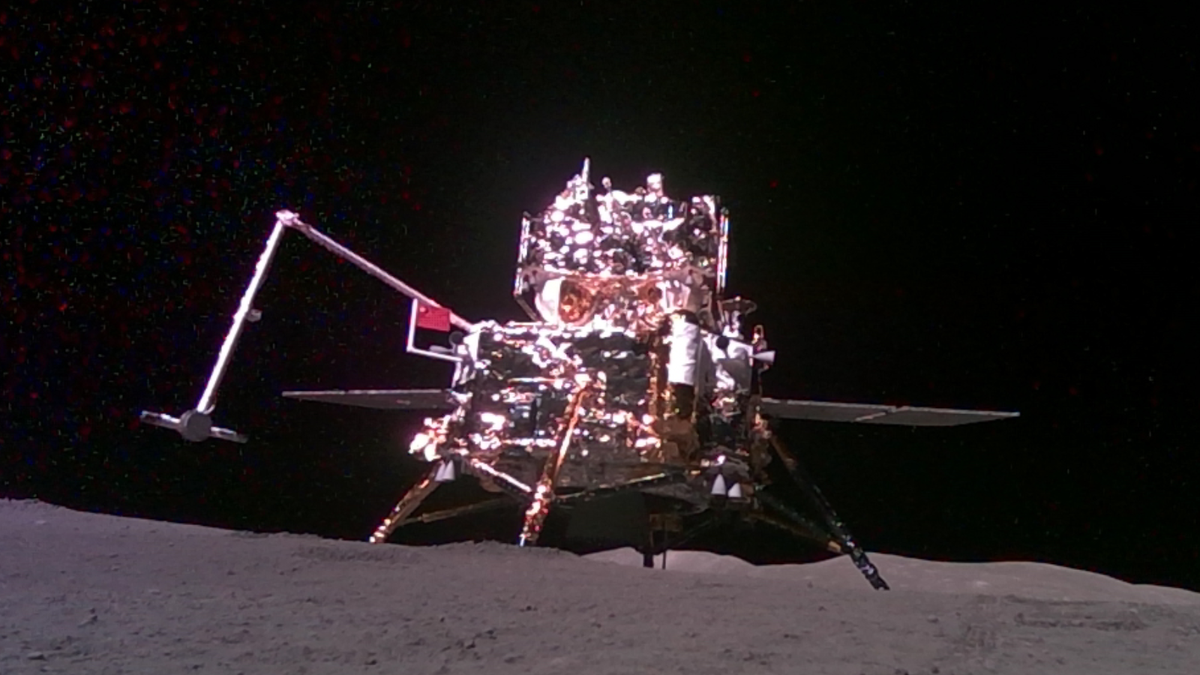China has made spaceflight history yet again.
The nation’s robotic Chang’e 6 mission returned material from the moon‘s mysterious far side to Earth on Tuesday (June 25) — something that had never been done before.
The milestone moment occurred Tuesday at 2:07 a.m. EDT (0607 GMT; 2:07 p.m. Beijing time), when Chang’e 6’s return capsule landed in China’s Inner Mongolia Autonomous Region.
Chang’e 6 consists of four modules: a lunar lander, a return capsule, an orbiter and an ascender (a small rocket carried by the lander).
Related: China’s Chang’e 6 spacecraft finds long-sought particles on far side of the moon
This hardware launched on May 3 and arrived in lunar orbit five days later. On June 1, the lander touched down inside Apollo crater, which lies within the South Pole-Aitken (SPA) basin, a 1,600-mile-wide (2,500 kilometers) impact feature on the moon’s far side.
The lander collected about 4.4 pounds (2 kilograms) of lunar material using a scoop and a drill. This precious cargo launched aboard the ascender on June 3 and met up with the mission’s orbiter a few days later.
The orbiter — carrying the samples within its return capsule — began heading toward Earth on or around June 21, according to NASA. (China has provided few official updates about Chang’e 6’s timeline and milestones.) The sample’s long journey came to an end early Tuesday with the return capsule’s touchdown.
Chang’e 6 is not the first successful lunar sample-return mission; the Soviet Union, the United States and China (with the Chang’e 5 mission in 2020) have all brought material back from Earth’s nearest neighbor. But those previous efforts all collected dirt and rocks on the moon’s near side, the one that always faces Earth.
The far side, which is very different from the near, is more difficult to explore. Because the far side faces away from Earth, a relay satellite is required to communicate with spacecraft that operate there. (China has launched two such relay satellites to date.) The far side is therefore little-studied, so scientists are excited to get up-close looks at Chang’e 6’s samples.
The material could help answer some vexing questions about the solar system’s early history. For example, the SPA basin formed 4.26 billion years ago — a few hundred million years after most lunar craters, which were blasted out by asteroids and comets during a violent stretch known as the Late Heavy Bombardment.
“Was the SPA formed as part of the Late Heavy Bombardment? Or was it a separate event? By obtaining precise dates for the basin and the craters overlying it, we will be able to better understand the moon’s history,” the nonprofit Planetary Society wrote in a description of the Chang’e 6 mission.
“This also has implications for understanding the origins of life on Earth,” the Planetary Society added. “It’s possible that asteroids carried water and organic materials to Earth during the Late Heavy Bombardment. Understanding the timing and circumstances of this event is critical for unpacking our origin story.”
Chang’e 6 was China’s second mission to the moon’s far side; in January 2019, Chang’e 4 landed a rover there called Yutu 2, which remains active today. No other nation has soft-landed any hardware on the lunar far side.
China’s moon plans don’t end with Chang’e 6. The nation plans to launch Chang’e 7 and Chang’e 8 in 2026 and 2028, respectively. The latter mission will help test technologies needed to establish a moon base, which China aims to build near the water-ice-rich south pole in the 2030s.
#China #returns #samples #moons #side #historic #1st,
#China #returns #samples #moons #side #historic #1st
